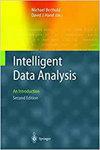An in-depth study on key nodes in social networks
IF 0.8
4区 计算机科学
Q4 COMPUTER SCIENCE, ARTIFICIAL INTELLIGENCE
引用次数: 0
Abstract
In social network analysis, identifying the important nodes (key nodes) is a significant task in various applications. There are three most popular related tasks named influential node ranking, influence maximization, and network dismantling. Although these studies are different due to their own motivation, they share many similarities, which could confuse the non-domain readers and users. Moreover, few studies have explored the correlations between key nodes obtained from different tasks, hindering our further understanding of social networks. In this paper, we contribute to the field by conducting an in-depth survey of different kinds of key nodes through comparing these key nodes under our proposed framework and revealing their deep relationships. First, we clarify and formalize three existing popular studies under a uniform standard. Then we collect a group of crucial metrics and propose a fair comparison framework to analyze the features of key nodes identified by different research fields. From a large number of experiments and deep analysis on twenty real-world datasets, we not only explore correlations between key nodes derived from the three popular tasks, but also summarize insightful conclusions that explain how key nodes differ from each other and reveal their unique features for the corresponding tasks. Furthermore, we show that Shapley centrality could identify key nodes with more generality, and these nodes could also be applied to the three popular tasks simultaneously to a certain extent.对社交网络关键节点的深入研究
在社会网络分析中,识别重要节点(关键节点)是各种应用中的一项重要任务。有三种最流行的相关任务:影响节点排序、影响最大化和网络拆除。虽然这些研究由于各自的动机而有所不同,但它们有许多相似之处,这可能会使非领域读者和用户感到困惑。此外,很少有研究探讨不同任务获得的关键节点之间的相关性,阻碍了我们对社会网络的进一步理解。在本文中,我们对不同类型的关键节点进行了深入的调查,通过在我们提出的框架下对这些关键节点进行比较,揭示它们之间的深层关系,从而为该领域做出了贡献。首先,我们在一个统一的标准下澄清和正式化了三个现有的流行研究。然后,我们收集了一组关键指标,并提出了一个公平的比较框架,以分析不同研究领域识别的关键节点的特征。通过对20个真实数据集的大量实验和深入分析,我们不仅探索了三种流行任务中关键节点之间的相关性,而且总结出了深刻的结论,解释了关键节点之间的差异,并揭示了相应任务中关键节点的独特特征。此外,我们发现Shapley中心性可以更普遍地识别关键节点,并且这些节点也可以在一定程度上同时应用于三种流行的任务。
本文章由计算机程序翻译,如有差异,请以英文原文为准。
求助全文
约1分钟内获得全文
求助全文
来源期刊

Intelligent Data Analysis
工程技术-计算机:人工智能
CiteScore
2.20
自引率
5.90%
发文量
85
审稿时长
3.3 months
期刊介绍:
Intelligent Data Analysis provides a forum for the examination of issues related to the research and applications of Artificial Intelligence techniques in data analysis across a variety of disciplines. These techniques include (but are not limited to): all areas of data visualization, data pre-processing (fusion, editing, transformation, filtering, sampling), data engineering, database mining techniques, tools and applications, use of domain knowledge in data analysis, big data applications, evolutionary algorithms, machine learning, neural nets, fuzzy logic, statistical pattern recognition, knowledge filtering, and post-processing. In particular, papers are preferred that discuss development of new AI related data analysis architectures, methodologies, and techniques and their applications to various domains.
 求助内容:
求助内容: 应助结果提醒方式:
应助结果提醒方式:


